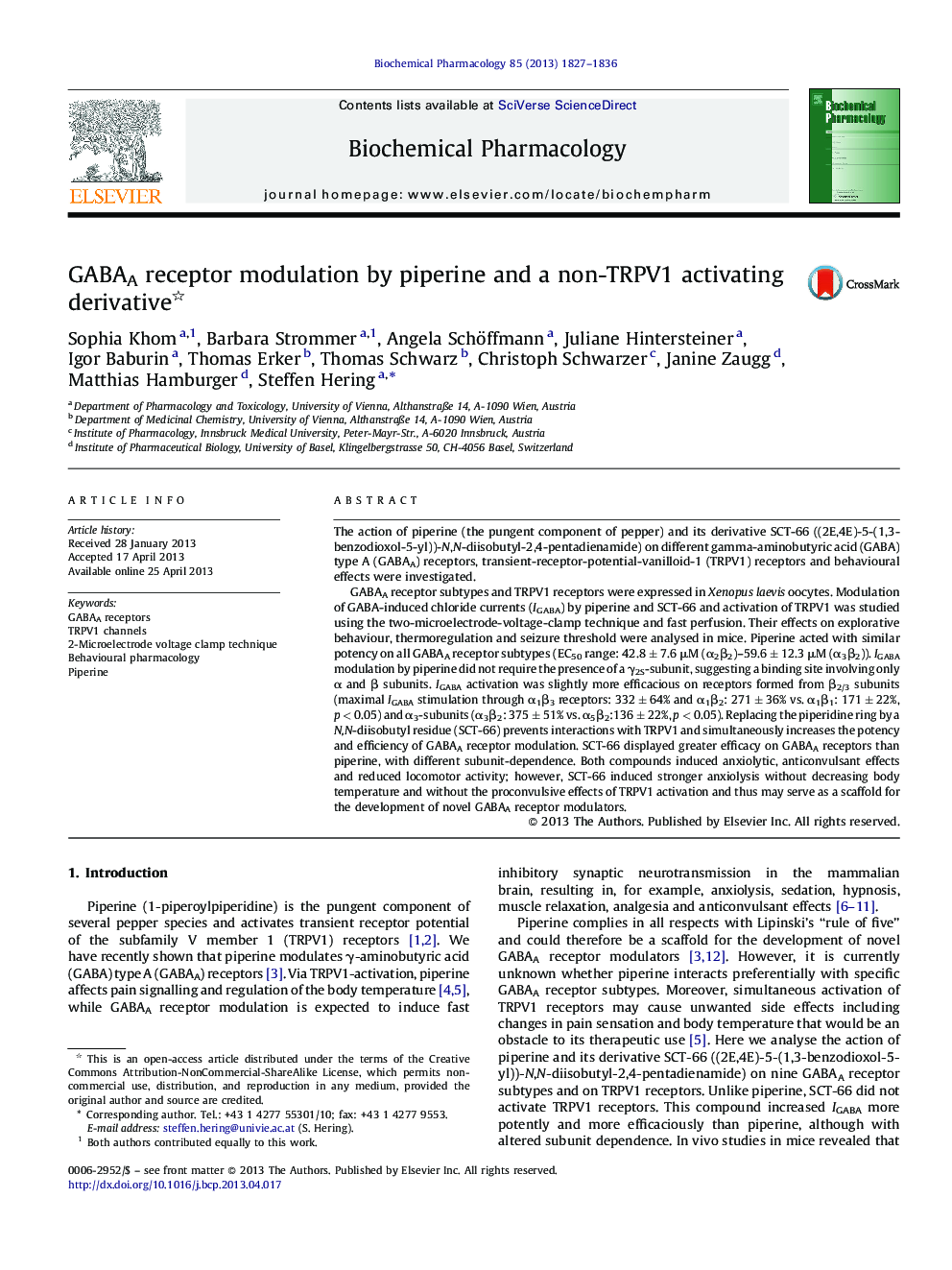| Article ID | Journal | Published Year | Pages | File Type |
|---|---|---|---|---|
| 5823864 | Biochemical Pharmacology | 2013 | 10 Pages |
Abstract
The action of piperine (the pungent component of pepper) and its derivative SCT-66 ((2E,4E)-5-(1,3-benzodioxol-5-yl))-N,N-diisobutyl-2,4-pentadienamide) on different gamma-aminobutyric acid (GABA) type A (GABAA) receptors, transient-receptor-potential-vanilloid-1 (TRPV1) receptors and behavioural effects were investigated.GABAA receptor subtypes and TRPV1 receptors were expressed in Xenopus laevis oocytes. Modulation of GABA-induced chloride currents (IGABA) by piperine and SCT-66 and activation of TRPV1 was studied using the two-microelectrode-voltage-clamp technique and fast perfusion. Their effects on explorative behaviour, thermoregulation and seizure threshold were analysed in mice. Piperine acted with similar potency on all GABAA receptor subtypes (EC50 range: 42.8 ± 7.6 μM (α2β2)-59.6 ± 12.3 μM (α3β2)). IGABA modulation by piperine did not require the presence of a γ2S-subunit, suggesting a binding site involving only α and β subunits. IGABA activation was slightly more efficacious on receptors formed from β2/3 subunits (maximal IGABA stimulation through α1β3 receptors: 332 ± 64% and α1β2: 271 ± 36% vs. α1β1: 171 ± 22%, p < 0.05) and α3-subunits (α3β2: 375 ± 51% vs. α5β2:136 ± 22%, p < 0.05). Replacing the piperidine ring by a N,N-diisobutyl residue (SCT-66) prevents interactions with TRPV1 and simultaneously increases the potency and efficiency of GABAA receptor modulation. SCT-66 displayed greater efficacy on GABAA receptors than piperine, with different subunit-dependence. Both compounds induced anxiolytic, anticonvulsant effects and reduced locomotor activity; however, SCT-66 induced stronger anxiolysis without decreasing body temperature and without the proconvulsive effects of TRPV1 activation and thus may serve as a scaffold for the development of novel GABAA receptor modulators.
Related Topics
Health Sciences
Pharmacology, Toxicology and Pharmaceutical Science
Pharmacology
Authors
Sophia Khom, Barbara Strommer, Angela Schöffmann, Juliane Hintersteiner, Igor Baburin, Thomas Erker, Thomas Schwarz, Christoph Schwarzer, Janine Zaugg, Matthias Hamburger, Steffen Hering,
